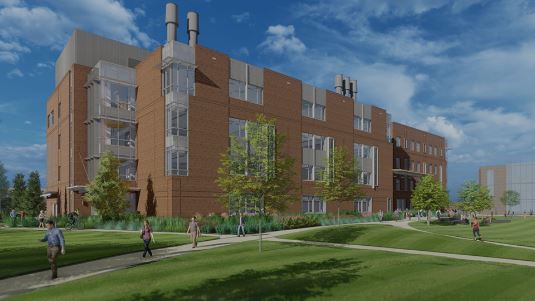Innovative Water Conservation Strategies for Sustainable MEP Design
Innovative Water Conservation Strategies for Sustainable MEP Design in California Buildings
To meet California’s urgent water sustainability goals, implementing innovative water conservation strategies for sustainable MEP design is no longer optional—it’s essential. The state’s unique climate and frequent droughts necessitate a shift towards water-conscious building practices that not only conserve this precious resource but also enhance the overall efficiency of modern structures. In this blog post, we will explore cutting-edge water conservation strategies that are reshaping the landscape of sustainable MEP design in California.
1. Introduction to Water Conservation in MEP Design
In today’s world of climate change and limited water resources, sustainable MEP design is more important than ever—especially in California. The state’s growing population and changing climate increase the need for smart water management in buildings.
MEP systems influence a building’s overall performance, including water and energy use. With modern technologies, architects and engineers can cut down water waste and improve efficiency. This includes selecting water-saving fixtures and using systems like rainwater harvesting and greywater reuse.
Why Sustainable Water Use Matters
California’s urban growth and dry spells put pressure on water infrastructure. MEP design that includes conservation strategies helps balance resource use with long-term sustainability. By designing with water in mind, we can reduce environmental impact while saving money.
2. Understanding California’s Water Challenges
California is a state defined by its stark contrasts—lush vineyards, sprawling deserts, and an expansive coastline, all of which are shaped by its unique climate and geography. However, this diversity comes with significant water challenges that have become increasingly pronounced in recent years. As one of the most populous states in the U.S., California faces a growing demand for water that often outstrips supply, particularly during prolonged drought periods that have become more frequent and severe due to climate change.
A combination of factors contributes to California’s water woes. The state relies heavily on a complex system of aqueducts, reservoirs, and groundwater pumping, which can be unsustainable when faced with reduced snowfall in the Sierra Nevada mountains— California’s primary water source. Additionally, urbanization and agricultural practices place immense pressure on existing water resources. The rapid growth of cities results in increased impervious surfaces, which reduce natural groundwater recharge and lead to stormwater runoff, further complicating water management efforts.
3. The Role of MEP Systems in Sustainable Building Design
In the realm of sustainable building design, Mechanical, Electrical, and Plumbing (MEP) systems play a pivotal role in enhancing water conservation efforts. These intricate systems are not merely functional; they are integral to creating efficient, resilient, and environmentally friendly buildings in California’s diverse climate.
At the heart of MEP systems is the necessity for synergy and optimization across all mechanical, electrical, and plumbing components. For instance, advanced irrigation systems, which can be integrated with smart technology, utilize real-time data to monitor soil moisture levels and weather forecasts. This automation not only conserves water but also ensures that landscapes thrive sustainably, reducing the need for extensive irrigation.
4. Rainwater Harvesting: Techniques and Benefits
Rainwater harvesting is a sustainable practice that has gained significant traction in California’s MEP (Mechanical, Electrical, and Plumbing) design, especially in the face of increasing water scarcity. This technique involves the systematic collection and storage of rainwater from rooftops and other surfaces, redirecting it for various uses, including irrigation, toilet flushing, and even potable water supply when properly treated.
One of the key techniques in rainwater harvesting is the installation of a rainwater collection system that typically includes gutters, downspouts, and storage tanks. These systems can be either above-ground or underground, allowing flexibility based on the building’s design and available space. The collected rainwater can then be filtered to remove debris and contaminants, ensuring that it meets safety standards for its intended use.
The benefits of rainwater harvesting are manifold. First and foremost, it significantly reduces dependence on municipal water supplies, which is particularly crucial in drought-prone regions like California. This not only conserves vital water resources but also alleviates stress on local water infrastructure. Additionally, using harvested rainwater can lead to substantial cost savings on water bills, providing a return on investment over time.
5. Greywater Recycling Systems: Implementation and Impact
Greywater recycling systems are emerging as a pivotal component in the quest for sustainable MEP (Mechanical, Electrical, and Plumbing) design within California’s buildings. These systems are designed to repurpose water from everyday activities—such as showering, washing dishes, and laundry—transforming what would otherwise be considered waste into a valuable resource for irrigation and toilet flushing. By capturing and treating greywater, buildings can drastically reduce their overall water consumption, making a significant impact on sustainability efforts, particularly in regions like California, where water scarcity is an ever-pressing concern.
Implementing a greywater recycling system involves several critical steps. First, the design must comply with local regulations, which vary across municipalities but generally focus on the safety and health implications of reusing greywater. Once compliant, the system typically includes filtration and disinfection processes to ensure that the recycled water is safe for its intended use.
6. Low-Flow Fixtures and Appliances: Enhancing Efficiency
In the quest for sustainable building design, the incorporation of low-flow fixtures and appliances has emerged as a cornerstone strategy for water conservation, particularly in California’s arid climate. These innovative solutions not only reduce water consumption but also promote environmental stewardship and operational efficiency within mechanical, electrical, and plumbing (MEP) systems.
Low-flow fixtures, such as faucets, showerheads, and toilets, are engineered to use significantly less water than traditional models without sacrificing performance. For instance, modern low-flow showerheads can reduce water usage from an average of 2.5 gallons per minute to as little as 1.5 gallons, all while maintaining a satisfying shower experience. Similarly, dual-flush toilets offer users the choice between a low-volume flush for liquid waste and a higher volume for solid waste, effectively minimizing water use based on need.
7. Smart Irrigation Systems for Landscape Management
In the face of California’s persistent drought challenges, smart irrigation systems have emerged as a transformative solution for landscape management in sustainable Mechanical, Electrical, and Plumbing (MEP) design. These systems leverage advanced technology to optimize water usage, ensuring that landscapes remain lush and vibrant while conserving precious resources.
At their core, smart irrigation systems utilize soil moisture sensors, weather data, and automated scheduling to deliver precise amounts of water to plants only when they need it. This means that rather than adhering to a rigid watering schedule, these systems adapt in real-time to environmental conditions. For instance, if a rainstorm occurs, the system can automatically reduce or even suspend watering, preventing over-saturation and runoff.
Moreover, many smart irrigation systems allow for remote management via smartphones or tablets. This capability empowers landscape managers and building owners to monitor water usage and adjust settings from anywhere, facilitating proactive maintenance and timely responses to changing weather patterns. In addition, some systems can integrate with other building management technologies, creating a cohesive approach to resource management across the entire facility.
8. Incorporating Native Plant Landscaping to Reduce Water Use
In California’s arid climate, incorporating native plant landscaping has emerged as a transformative strategy for reducing water use in sustainable Mechanical, Electrical, and Plumbing (MEP) design. Native plants, adapted to the region’s unique environmental conditions, require significantly less water than non-native species, making them a practical and eco-friendly alternative for building landscapes.
By selecting flora that naturally thrives in California’s diverse ecosystems—from the coastal sage scrub to the chaparral—designers can create lush, vibrant spaces that require minimal irrigation. These plants are not only drought-resistant but also offer a range of ecological benefits, such as attracting local pollinators and providing habitats for native wildlife. This aligns beautifully with the principles of sustainable design, fostering biodiversity while simultaneously conserving precious water resources.
9. Building Automation Systems for Monitoring Water Usage
Building Automation Systems (BAS) are at the forefront of innovative water conservation strategies in sustainable Mechanical, Electrical, and Plumbing (MEP) design for California buildings. These advanced systems play a critical role in optimizing water use by providing real-time monitoring and data analysis, allowing facility managers to identify inefficiencies and implement corrective actions swiftly.
Imagine a sophisticated network of sensors and smart meters installed throughout a building, continuously collecting data on water consumption across various systems—irrigation, plumbing fixtures, cooling towers, and more. This data is fed into a centralized platform that not only tracks usage patterns but also alerts building managers to anomalies such as leaks or excessive consumption. By enabling proactive maintenance, BAS can significantly reduce water waste and associated costs.
10. Case Studies: Successful Water Conservation in California Buildings
In the quest for sustainable design, California has emerged as a leader in innovative water conservation strategies within its buildings. A closer examination of successful case studies reveals not only the efficacy of these approaches but also their adaptability for future projects.
One standout example is the **San Francisco Public Utilities Commission (SFPUC)** headquarters, which showcases a state-of-the-art rainwater harvesting system that captures and treats rainwater for non-potable uses such as irrigation and toilet flushing. The building features a green roof that not only enhances aesthetics but also absorbs rainwater, reducing runoff and promoting biodiversity. These combined strategies have led to a remarkable 50% reduction in potable water use, setting a benchmark for other municipal buildings.
Similarly, the **California Academy of Sciences in Golden Gate Park** implements an extensive greywater recycling system that repurposes water from sinks and showers for irrigation purposes. This facility also utilizes a living roof, which not only provides insulation but also absorbs rain, reducing the burden on the city’s stormwater systems. The integration of these sustainable practices has resulted in a 30% decrease in overall water usage, proving that innovative design can harmonize with environmental stewardship.
Conclusion
Innovative water conservation strategies are vital for sustainable MEP design in California. As water becomes scarcer, integrating smart systems and sustainable practices is key to long-term success.
Rainwater harvesting, greywater recycling, low-flow fixtures, and smart irrigation all reduce consumption without sacrificing comfort. Native plants and automation systems also enhance performance and promote environmental responsibility.
Architects, engineers, and builders must work together to prioritize water conservation. By doing so, we can create buildings that meet today’s needs while protecting water resources for tomorrow.
learn more : https://www.ucop.edu/facilities-manual/manual/volume-6/vol-6-chapter-5.html
Visit : https://gdiengdesign.com/gdiengdesign-mep/

















































